Scaffolding Companies Raynham Center
Find top Scaffolding Builders in Raynham Center
Receive multiple Scaffolding Solutions quotes for your project today! Compare profiles, reviews, accreditations, portfolio, etc... and choose the best deal.
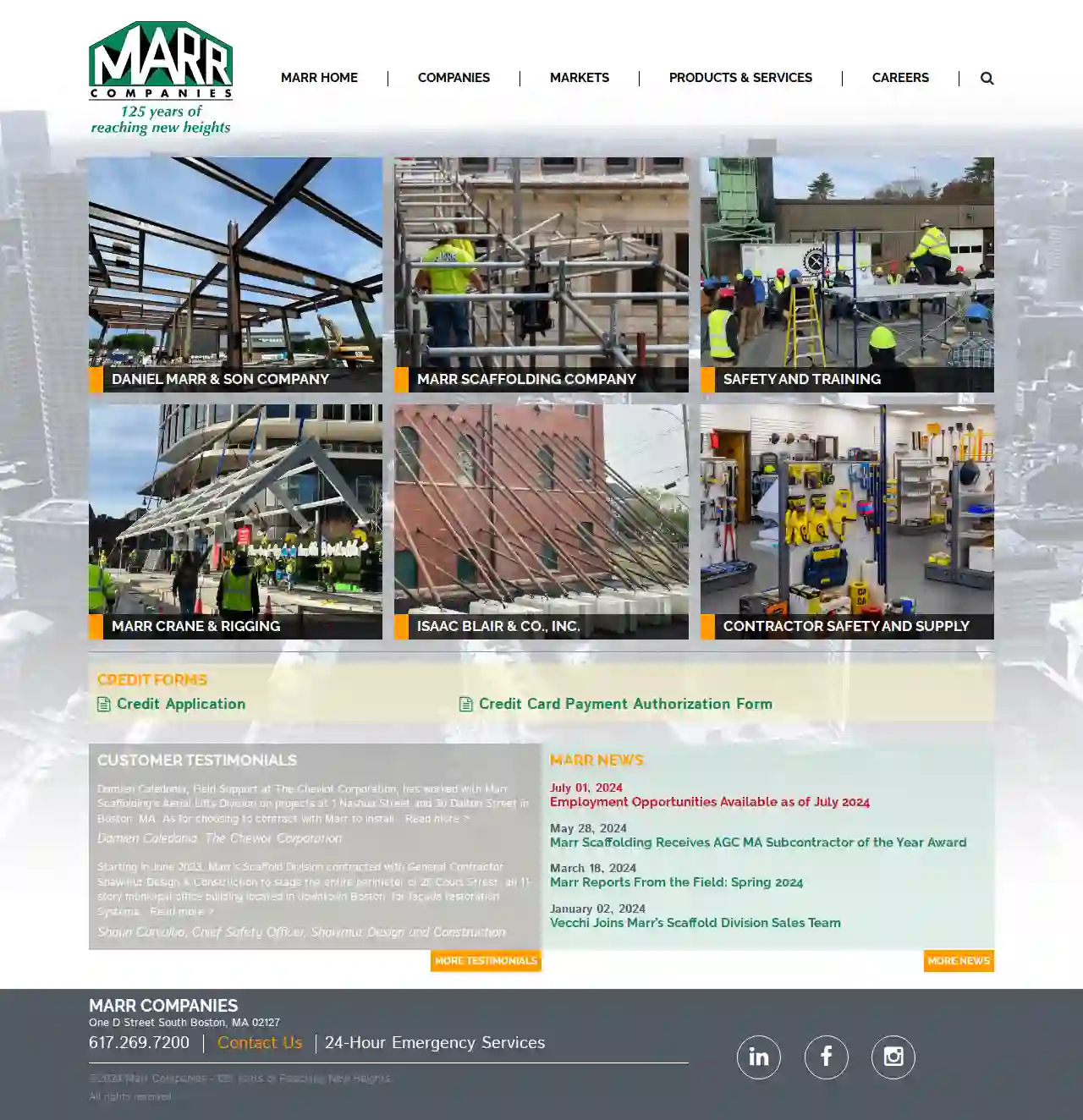
Marr Scaffolding Company
4.421 reviewsBoston, MA, 1 D Street, 02127, USMarr Companies is a leading provider of safety and training solutions, with over 125 years of experience in the industry. Our mission is to provide top-notch services to our clients, ensuring their safety and well-being. We offer a wide range of services, including aerial lifts, aluma joists, angel's wings, bleachers, boom lifts, bracing, building remediation, calibrated jacking, chutes, column replacement, contractor's safety and supply warehouse, construction elevators, cranes, dryair, elevators, emergency services, enclosures, environmental work, erection and dismantling, fall protection products, grandstands, ground thaw, heat wagon, hi-lite, hoists, hydro mobile, ladders, lulls, mast-climbing work platforms, needle shoring, plank, post shores, precast erection, pre-construction planning, redi-fence, rigging, safety, safety products, scaffolding, scissor lifts, sectional scaffold, shore-x, shoring, sidewalk protection, specialty shoring, specialty rigging, steel erection, suspended scaffolds, systems scaffold, temporary heat, temporary seating, trucking, wall bracing, and warehousing. Our team of experts is dedicated to providing the highest level of service and support to our clients. We are fully accredited and insured, and we take pride in our work. We are committed to reaching new heights and providing the best possible solutions to our clients.
- Services
- Why Us?
- Accreditations
- Our Team
- Testimonials
- Gallery
Get Quote
Lynn Ladder & Scaffolding Co., Inc.
4.253 reviews25 Fordham Rd, Lynn, 01902, USLynn Ladder was founded in 1946 by Bernie Kline with a mission to provide ladders and scaffolding to contractors in the New England area. Today, the third generation of Kline's continue to pursue that goal across the Eastern United States. Service and quality are paramount in this endeavor. At each of the Lyn-Lad companies, we strive to provide each of our customers with reasonably priced, high quality products in a timely manner. One of the main focuses of our company is rental equipment. This is backed by over 45 years of scaffolding experience. Our qualified employees can handle the scaffold needs of contractors, both large and small. Our services range from engineering to manufacturing specialty products that are required by contractors to complete their jobs. We continue to manufacture many products in the United States. This provides many local jobs and allows us to make different custom products with a quick turnaround, giving us a competitive edge. Safety is always a factor in renting and selling the many products we manufacture and distribute. Lyn-Lad has offered safety training programs for many years. We will continue to do so for the safety of our employees and customers. It is our employees that comprise our most valuable asset at the Lyn –Lad companies. Each and every one of them makes up the heart of the Lyn-Lad Companies. From our warehouse crews to our corporate staff, we could not succeed without them.
- Services
- Why Us?
- Accreditations
- Gallery
Get Quote
Commonwealth Scaffold
59 reviews88 Eastern Ave, Malden, 02148, USWe Build Safe, So You Can Build Safer Commonwealth Scaffold, LLC serves Boston and the New England area market and is committed to providing our customers with the highest quality scaffolding products and service. Our History A union company with a focus on safety and bringing innovative solutions to complex jobsites. Commonwealth Scaffold, founded in 2007 by Luke McKinnon and Peter Volpe, is a Boston based scaffolding contractor servicing the New England area with the highest quality scaffolding planning and erection. Our main objective is to deliver safe and innovative solutions to your difficult builds. We use experience, open communications, a safety oriented approach and innovative design to accomplish our clients’ goals and needs. Our extensive portfolio of specialized services includes: scaffolding, coatings, insulation, refractory, formwork and shoring, specialty mechanical services, trash chutes and other related crafts. Our Approach Experience A team with unrivaled experience and leading edge training. Communication Managment that listens to our clients unique challenges and goals. Safety A focus on safety to keep your jobsite injury-free and on schedule. Innovation Solution oriented approach to complex builds and jobsites.
- Services
- Why Us?
- Our Team
- Gallery
Get Quote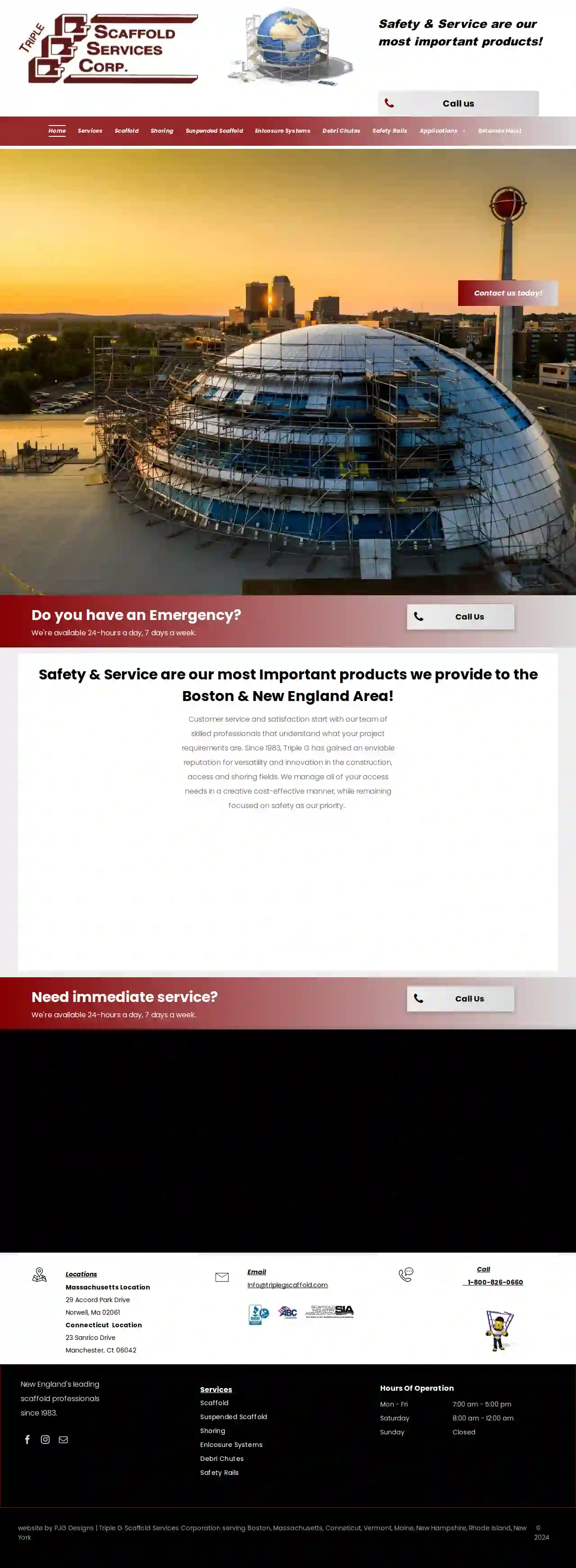
Triple G Scaffold Services Corporation
4.610 reviews29 Accord Park Drive, Norwell, 02061, USSafety & Service are our most important products! Call us Safety & Service are our most Important products we provide to the Boston & New England Area! Customer service and satisfaction start with our team of skilled professionals that understand what your project requirements are. Since 1983, Triple G has gained an enviable reputation for versatility and innovation in the construction, access and shoring fields. We manage all of your access needs in a creative cost-effective manner, while remaining focused on safety as our priority.
- Services
- Why Us?
- Gallery
Get Quote
Lynn Ladder & Scaffolding Co., Inc.
3.813 reviewsLynn, MA, USLynn Ladder was founded in 1946 by Bernie Kline. Bernie’s mission was to provide Ladders and Scaffolding to contractors in the New England area. Today, the third generation of Kline’s continue to pursue that goal across the Eastern United States. Service and quality are paramount in this endeavor. At each of the Lyn-Lad companies, we strive to provide each of our customers with reasonably priced, high quality products in a timely manner.
- Services
- Why Us?
- Accreditations
- Gallery
Get Quote
Johnson Farm & Garden, Hardware & Rental
4.7406 reviews1442 VT Route 15, Johnson, 05656, USWelcome to Johnson Farm & Garden, Hardware and Rental, a family-owned business rooted in Vermont. Our 25,000 sq. foot store is stocked with a wide selection of products, including clothing and footwear, camping equipment, pet food and supplies, garden and growing products, and a toy department. We're also the largest Milwaukee Tool Retailer & Authorized Repair Center in Vermont, offering equipment rentals for projects of all sizes. Located in the picturesque town of Johnson, Vermont, we're just 30 minutes from Stowe, 60 minutes from Burlington, and 15 minutes from Smuggs'. Our team is committed to providing unbeatable selection and exceptional customer service. We're locally owned and operated, and we're proud to be a part of the Vermont community. Come visit us today and experience the difference for yourself!
- Services
- Why Us?
- Accreditations
- Our Team
- Testimonials
- Gallery
Get Quote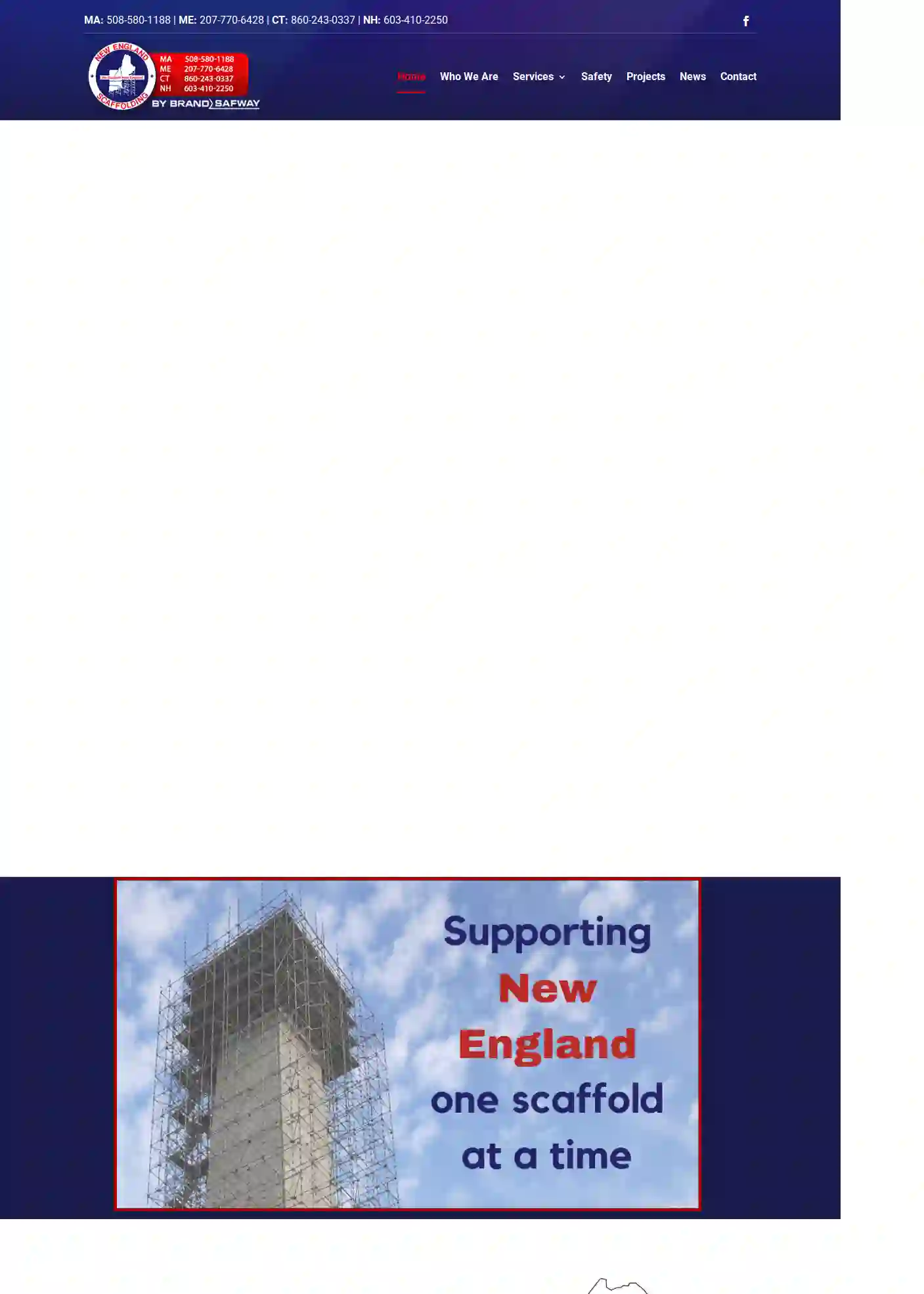
New England Scaffolding
4.214 reviews412 R Washington St, Norwell, 02061, USNew England Scaffolding is a leading provider of scaffolding solutions for various industries. With offices in Massachusetts, Maine, Connecticut, and New Hampshire, we offer a range of services including scaffolding, shoring, suspended scaffolding, containment, temporary fencing, and debris chutes. Our team of experts will work with you to design a custom solution that meets your specific needs and ensures your project is completed safely and efficiently. With over 20 years of experience, we have established ourselves as a trusted partner for many clients. Contact us today to learn more about our services and how we can help you achieve your goals.
- Services
- Why Us?
- Gallery
Get Quote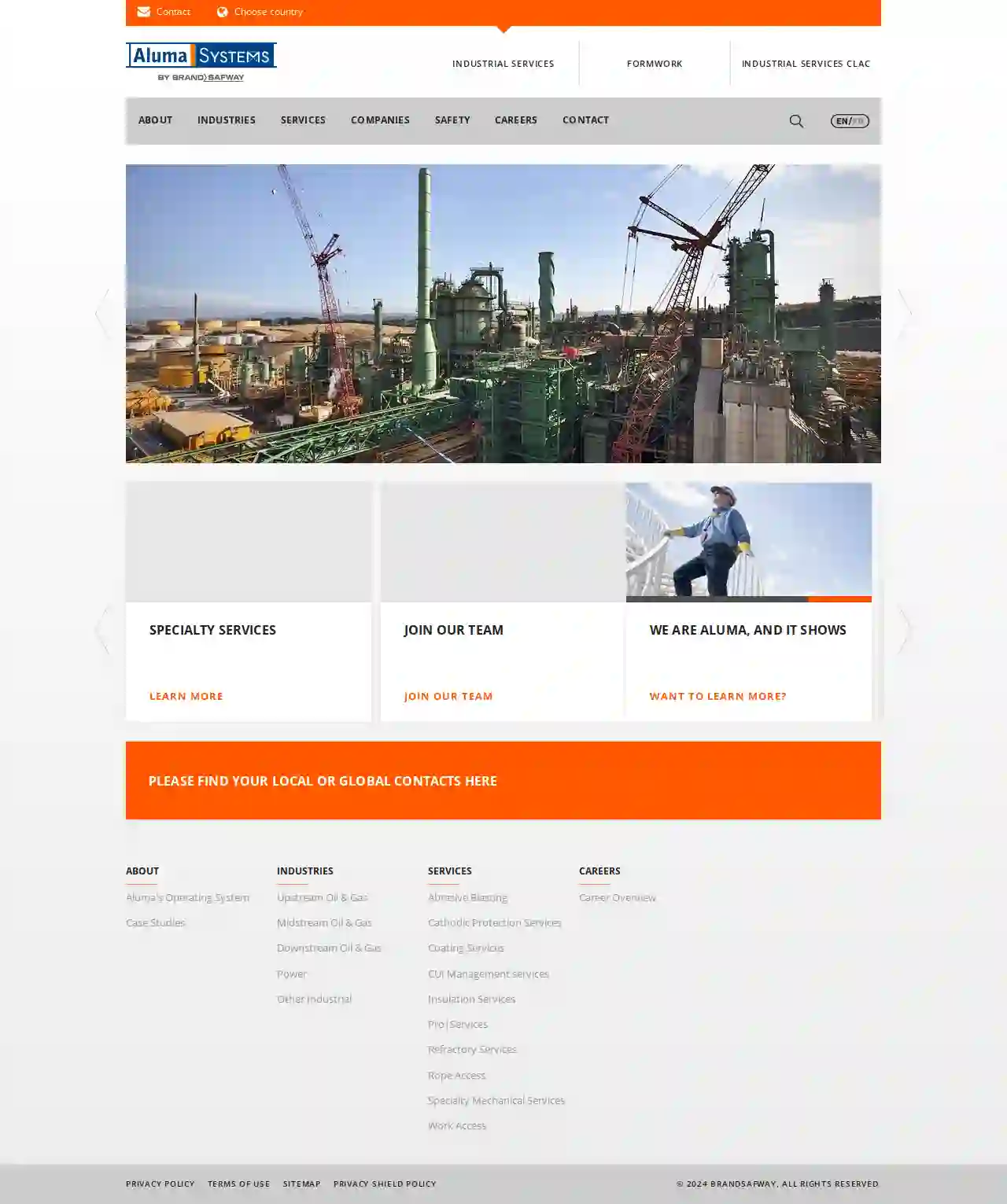
Aluma Systems (Industrial Services)
450 reviewsLynn, USAt Aluma Systems, we are a premier provider of integrated specialty services to the global energy, industrial and infrastructure markets. Our extensive portfolio of specialized industrial service offerings includes scaffolding, coatings, insulation, refractory, formwork and shoring, specialty mechanical services, and other related crafts. With an award-winning safety record and in-depth policies, systems and programs designed to engage the entire workforce in the delivery of safe work on all projects, we believe Aluma is more than a company with a great safety program...Aluma is a safe company.
- Services
- Why Us?
- Gallery
Get Quote
Goodro Lumber
4.920 reviews388 East Main St., East Middlebury, 05740, USWelcome to Goodro Lumber Company, Inc., a family-owned business since 1930. We pride ourselves on offering great customer service, quality materials, and lasting value. Our story began with Harry and Mildred Goodro, who purchased a sawmill in East Middlebury, VT, and grew into a retail building material business in 1950. Today, we continue to thrive under the leadership of Mark and Cindy Thomas, along with long-time employees Ron Warner and Tim Comes. Our mission is to provide exceptional service, top-notch products, and unwavering commitment to our customers.
- Services
- Why Us?
- Our Team
- Testimonials
- Gallery
Get Quote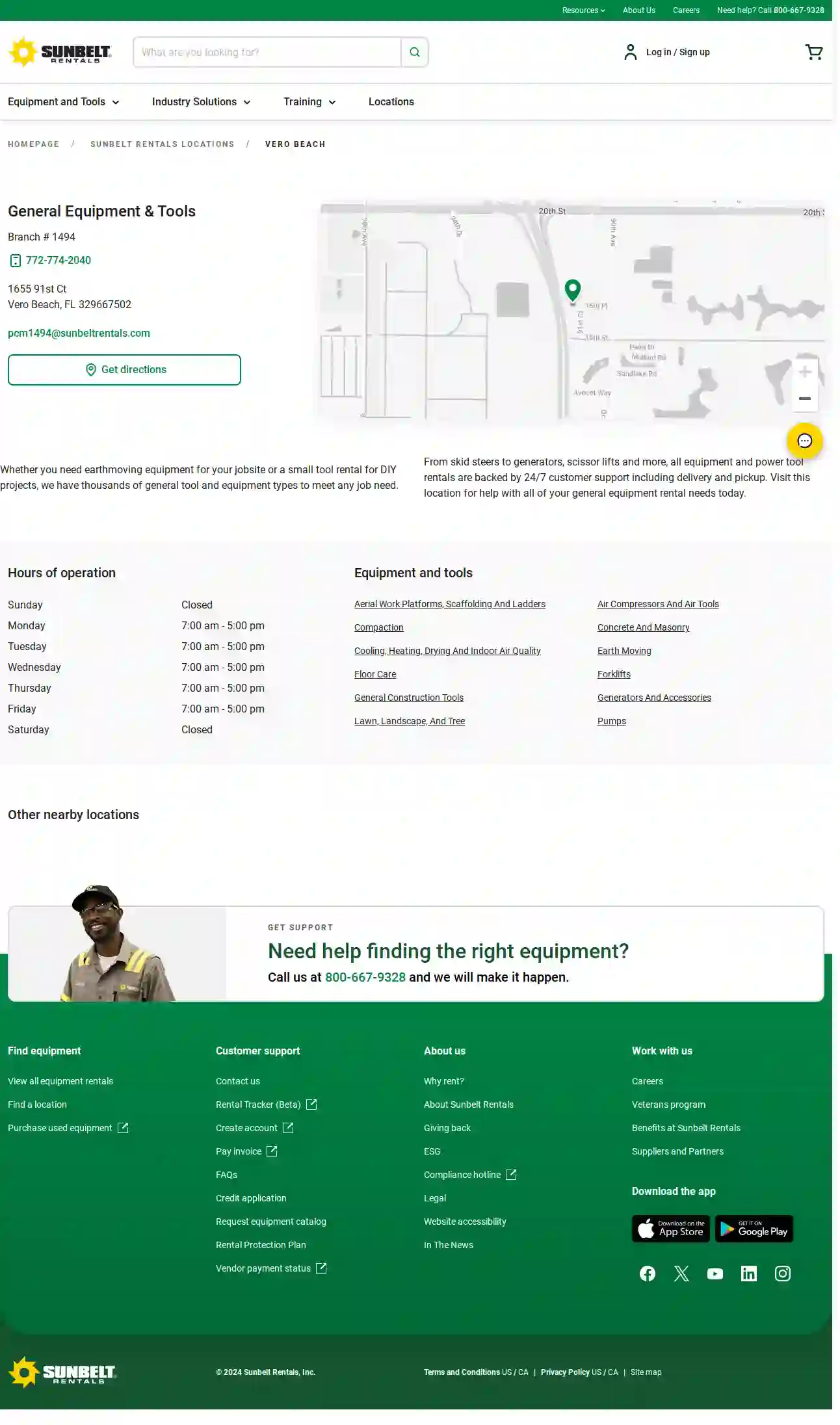
Sunbelt Rentals
4.810 reviews1234 Equipment Lane, Vero Beach, 32960, USSunbelt Rentals is a leading equipment rental company offering a wide range of aerial work platforms, scaffolding, ladders, cranes, boom trucks, and more. With a strong commitment to customer support, they provide assistance in finding the right equipment and offer various resources such as FAQs, rental tracker, and a customer support hotline. Sunbelt Rentals also prioritizes giving back to the community and has a strong focus on environmental, social, and governance (ESG) practices.
- Services
- Why Us?
- Accreditations
- Our Team
- Testimonials
- Gallery
Get Quote
Over 2,353+ Scaffolding Companies onboarded
Our scaffolding companies operate in Raynham Center & surroundings!
ScaffoldingHQ has curated and vetted Top Scaffolding Companies near Raynham Center. Find a top & trustworthy business today.
Frequently Asked Questions About Scaffolding Companies
- A larger, more complex structure typically used for accessing multiple levels of a building.
- Offers greater height and versatility.
- Often used for construction, renovation, and maintenance.
- Smaller, portable platforms usually used for tasks at a single level.
- Commonly used for painting, plastering, or light repairs.
- Can be rolling or stationary.
- Experience: 'How long have you been in business, and what experience do you have with projects like mine?'
- Licensing and Insurance: 'Are you fully licensed and insured, and can I see proof of coverage?'
- Safety Record: 'What are your safety procedures, and how do you ensure worker safety on the job site?'
- References: 'Can you provide references from previous clients?'
- Quotes and Costs: 'Can you provide a detailed quote that outlines all costs, including materials, labor, and any additional services?'
- Project Timeline: 'What is the estimated timeframe for scaffolding erection and dismantling?'
- Communication: 'How will you communicate with me throughout the project?'
- Encroaches onto public property (sidewalks, roads): Permits are usually needed from the local council or highway authority.
- Exceeds a certain height: Scaffolding above a specified height often requires a permit.
- Is erected in a conservation area or near a listed building: Special considerations and permits may apply.
- Always Wear a Safety Harness: Connect your harness to a secure anchor point at all times to prevent falls.
- Keep Platforms Clear: Remove tools, materials, and debris to avoid tripping hazards.
- Never Overload the Scaffolding: Stay within the designated weight limits.
- Be Aware of Your Surroundings: Pay attention to power lines, moving equipment, and other potential hazards.
- Inspect Before Use: Check the scaffolding for any damage or defects before starting work.
- Communicate Clearly: Use hand signals and clear communication to coordinate with other workers.
- Follow Safety Training: Attend and understand all safety training provided by your employer or the scaffolding company.
What is the difference between scaffolding and staging?
Scaffolding:
What questions should I ask a scaffolding company before hiring them?
Do I need a permit for scaffolding in the USA?
What are some tips for working safely on scaffolding?
What is the difference between scaffolding and staging?
Scaffolding:
- A larger, more complex structure typically used for accessing multiple levels of a building.
- Offers greater height and versatility.
- Often used for construction, renovation, and maintenance.
- Smaller, portable platforms usually used for tasks at a single level.
- Commonly used for painting, plastering, or light repairs.
- Can be rolling or stationary.
What questions should I ask a scaffolding company before hiring them?
- Experience: 'How long have you been in business, and what experience do you have with projects like mine?'
- Licensing and Insurance: 'Are you fully licensed and insured, and can I see proof of coverage?'
- Safety Record: 'What are your safety procedures, and how do you ensure worker safety on the job site?'
- References: 'Can you provide references from previous clients?'
- Quotes and Costs: 'Can you provide a detailed quote that outlines all costs, including materials, labor, and any additional services?'
- Project Timeline: 'What is the estimated timeframe for scaffolding erection and dismantling?'
- Communication: 'How will you communicate with me throughout the project?'
Do I need a permit for scaffolding in the USA?
- Encroaches onto public property (sidewalks, roads): Permits are usually needed from the local council or highway authority.
- Exceeds a certain height: Scaffolding above a specified height often requires a permit.
- Is erected in a conservation area or near a listed building: Special considerations and permits may apply.
What are some tips for working safely on scaffolding?
- Always Wear a Safety Harness: Connect your harness to a secure anchor point at all times to prevent falls.
- Keep Platforms Clear: Remove tools, materials, and debris to avoid tripping hazards.
- Never Overload the Scaffolding: Stay within the designated weight limits.
- Be Aware of Your Surroundings: Pay attention to power lines, moving equipment, and other potential hazards.
- Inspect Before Use: Check the scaffolding for any damage or defects before starting work.
- Communicate Clearly: Use hand signals and clear communication to coordinate with other workers.
- Follow Safety Training: Attend and understand all safety training provided by your employer or the scaffolding company.